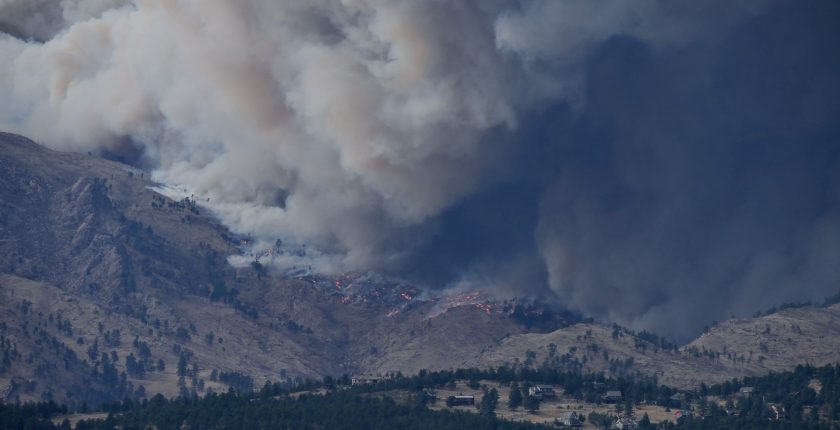Improving Disaster Risk Reduction Requires International Partnerships and Collaboration
Human Activity Increases Vulnerability Towards Natural Disasters
Human activity has undoubtedly increased our vulnerability to natural disasters. Besides adversely affecting the climate, human activity has also created a web-like structure of global connections. These connections, such as trade links, financial structures, bilateral agreements, are making the impact of natural disasters an international affair. Global connections create feedback loops that amplify the impact of natural disasters internationally and also influence a country’s ability to develop adequate resilience against natural disasters.
Assessing Disaster Risk is an International Issue
A key component of resilience against natural disasters is assessing disaster risk. Here assessing risk encompasses more than the likelihood and frequency of external shocks. It also includes how human processes generate the conditions of exposure to natural disasters. Essentially risk assessments analyse the additional factors that can impact all aspects of human life in the context of a disaster. Risk assessments then guide the development of resilience systems, change organisational behaviour, and direct funding to appropriate projects.
Assessing risk and mitigating against natural disasters has historically been a compartmentalised data-driven process. Risk has often been categorised and limited to countries or topic areas and as such is largely dealt with separately. This is so that actions can be easily and efficiently delegated to different organisations, institutions, or experts. However, it has come to light that an overreliance on such a manner of assessing risks also inhibits developing a holistic understanding of the various factors impacting disaster resilience. A disaster risk assessment that focuses on factors limited to the national arena, such as political stability, agricultural management, or the national economy obscures the impact that international factors have such as trade complexities, climate change, global market speculation, etc. These international factors are only set to grow in depth and complexity as the world continues to develop. As such, natural disasters can no longer be viewed as a localised or compartmentalised affair. Resilience towards natural disasters is becoming more and more an international issue.
Sendai Framework – Promoting International Cooperation
One manner in which to develop an international response to disaster resilience is by utilising the Sendai Framework for Disaster Risk Reduction. Initiated in 2015, the Sendai Framework aims to achieve a substantial reduction in the loss of life, health, and livelihood due to natural disasters over a 15-year span.
The Sendai framework encourages a diverse and interconnected approach to understanding risk, placing emphasis on how systems behave in a non-linear and complex fashion. Additionally, the Sendai framework promotes the recognition of the vast number of international factors and seeks to encourage collaborative international responses.
This year’s UN International Day for Disaster Risk Reduction focused on an element of the Sendai framework; enhancing international cooperation towards developing countries to complement their national actions.
The Philippines Data Collaboration with the EU’s Copernicus Satellite Observation Programme.
A recent example of international collaboration can be demonstrated in the recent partnership between the Philippines and the EU’s Copernicus Satellite Observation Programme. Copernicus, the European Union’s Earth observation programme, provides vast amounts of global data from satellites and in-situ ground systems monitoring ocean, atmosphere, and land changes. Formerly the Philippines could only access Copernicus’ data after a disaster had occurred. This partnership now gives the Philippines access to immediate data. The partnership will aid Philippines disaster risk assessments and subsequently support more informed disaster risk reduction management plans. In particular, the programme will aid the Philippines’ newly launched hazard assessment initiative. The GeoRisk Philippines Initiative collects real-time hazard assessment data across the country connecting the databases of 53 municipal governments. Thanks to the partnership with the EU Copernicus programme, the initiative will have greater real-time monitoring ability.
More such data-sharing programmes could ensure improved risk analysis and resilience in developing countries around the world. It makes sense to utilise the interconnected nature of the world to create positive partnerships and build a better global resilience towards natural disasters.
Bibliography
UNDRR, (2021) Reducing Disaster Risk https://undrr.maps.arcgis.com/apps/Cascade/index.html?appid=826a093e725b4bb6a0afbf277bac50ac%20
UNDRR,. (2021) The Ten Essentials for Making Cities Resilient, https://www.unisdr.org/campaign/resilientcities/toolkit/article/the-ten-essentials-for-making-cities-resilient.html
Mina, R,. (10th March 2021) Philippines looks to improve disaster preparedness with geospatial tech, https://news.mongabay.com/2021/03/philippines-looks-to-improve-disaster-preparedness-with-geospatial-tech/
Business Mirror,. (4th July 2021), EU to launch Copernicus space program in PHL in Q3, https://businessmirror.com.ph/2021/07/04/eu-to-launch-copernicus-space-program-in-phl-in-q3/
ASEAN,. (2020) Philippines turns to EU’s Copernicus in Earth Satellite Data Collaboration, https://aseangeospatial.org/phillippines/philippines-turns-to-eus-copernicus-in-earth-satellite-data-collaboration/
Copernicus,. (2021) Europe’s Eyes on Earth, https://www.copernicus.eu/en

